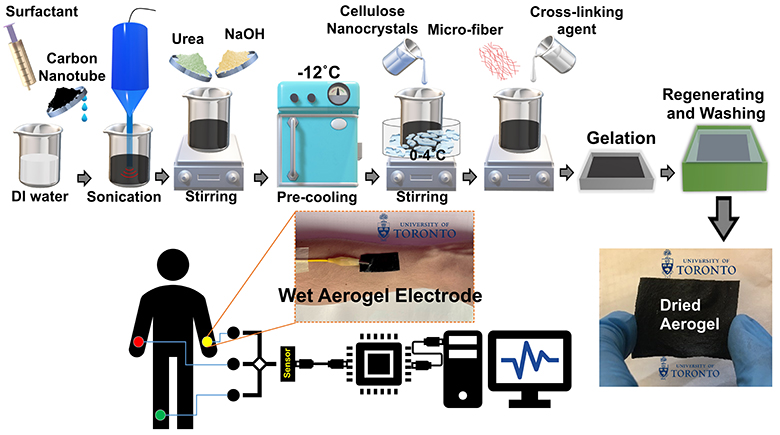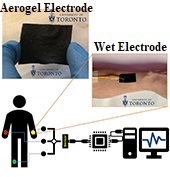
In this study a novel electrode material is developed based on conductive aerogel films for wet electrode application in electrophysiological monitoring. The electrode is fabricated by means of CNC, cellulose fibers, and CNT, and a porous conductive film is obtained. The developed material is fully characterized by investigating the morphology, chemical bands, water absorption, mechanical properties, and electrical properties. The effect of cross-linker on the chemical and mechanical properties was explored using FTIR and stress-strain curves of tensile test, respectively. The influence of CNT on the swelling properties and mechanical properties was also investigated. The electrical properties of the fabricated aerogel films are in a suitable range for electrophysiological monitoring applications such as ECG, EEG, and EMG. The fabricated electrodes are able to absorb a remarkable amount of water and the wet electrodes were very flexible due to the use of fiber and CNC which enables the film material for wet electrode applications. Such water retention properties can be beneficial for intimate electrode-skin coupling filling skin irregularities and therefore smooth signal recording and electrical stimulation for biomedical uses. In addition, the wet electrodes are air dryable with a relatively short wetting time allowing the material to be reused by patients long-term. That feature could also enable the use of this material for recording electrophysiological date at great distances if it is combined with garment-based, wireless recording solutions. The proposed material can fulfill the requirements for an electrode that can be used for long-term recordings, for repeated recordings, that is highly compliant with skin, has high water absorption, wets very fast and has appropriate impedance range for electrophysiological measurement applications.

